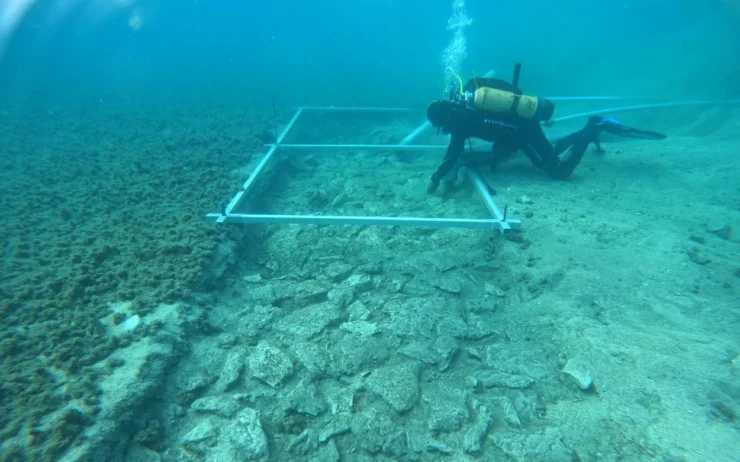The sunken road in Soline, a Neolithic settlement off the island of Korčula, is located five meters deep in sediment deposits. Korcula is part of an Adriatic archipelago which was originally part of the mainland. Rising sea-levels caused by the Earth’s melting icecap began to flood what were then the Dinaric Mountains’ coastal lowlands after 12,000 BC, and by 6000 BC, the archipelago had roughly reached its modern structure.
The Soline civilization is associated with the Hvar-Lisiii neolithic culture, named after the island of Hvar in the Adriatic. During earlier excavations at Soline, carbon dating revealed the presence of preserved organic materials that date to about 4,900 years ago. this is known to be a lost maritime culture. It is estimated that more information will be found as a result of research.
A four meter wide linear route made of stone slabs was discovered during a recent underwater investigation of the site, and this sunken road is nearly 7,000 years old. According to the statement, the newly discovered road connected this island to the Korčula coast. The peoples of Hvar also left behind ornaments and pottery, as well as evidence of farming and funeral rites.
Ground surveys were also carried out around Gradina Bay on the opposite side of Korčula, where Igor Borzić from the Department of Archaeology at the University of Zadar first noticed unusual features just below the water surface.
As a result, a second submerged settlement with a layout identical to Soline was found at a depth of about 4 to 5 meters. Once again connected to the Hvar civilization, the site has already produced stone blades, an axe, and millstone fragments.
In addition to underwater research, they are also excavating ancient sites on land, including a cave in the nearby town of Vela Luka, which has been home to many different cultures for at least 19,000 years, including Hvar.
The University of Zadar published video images of the underwater road, which measured about 12 feet in diameter, on Youtube:
